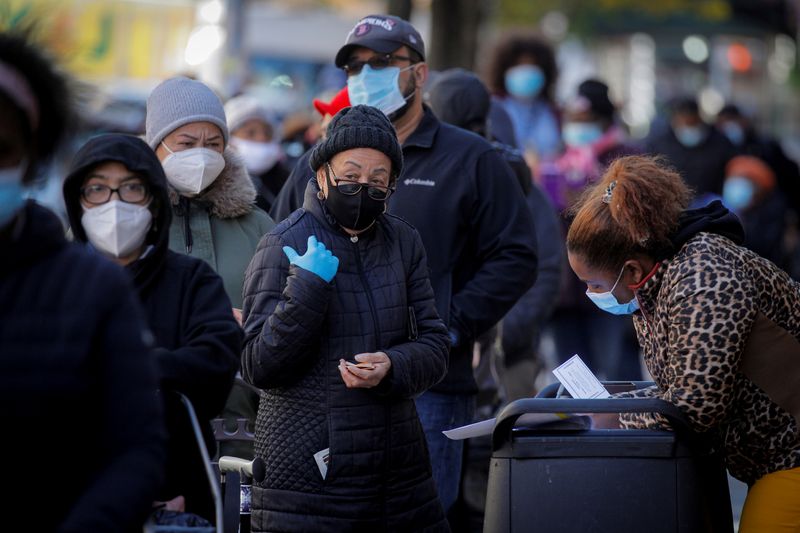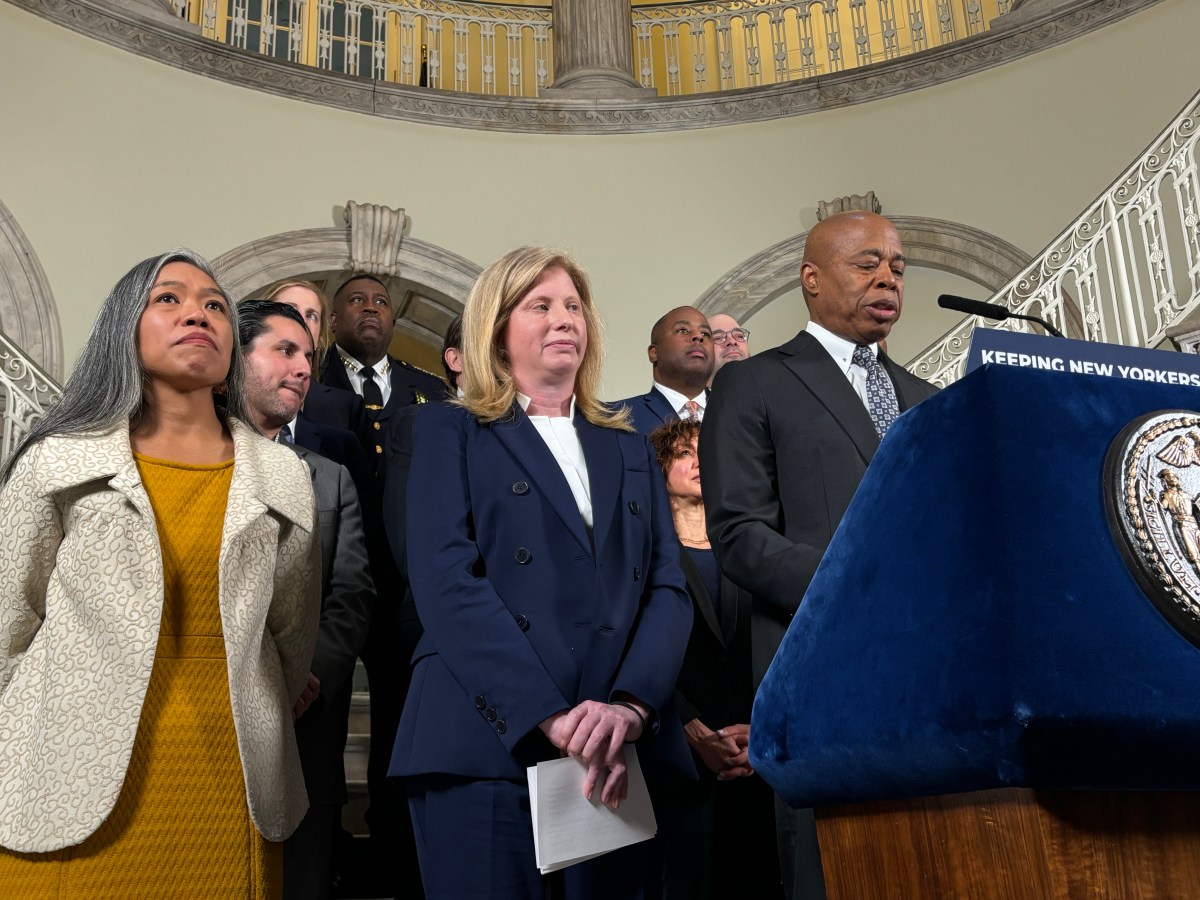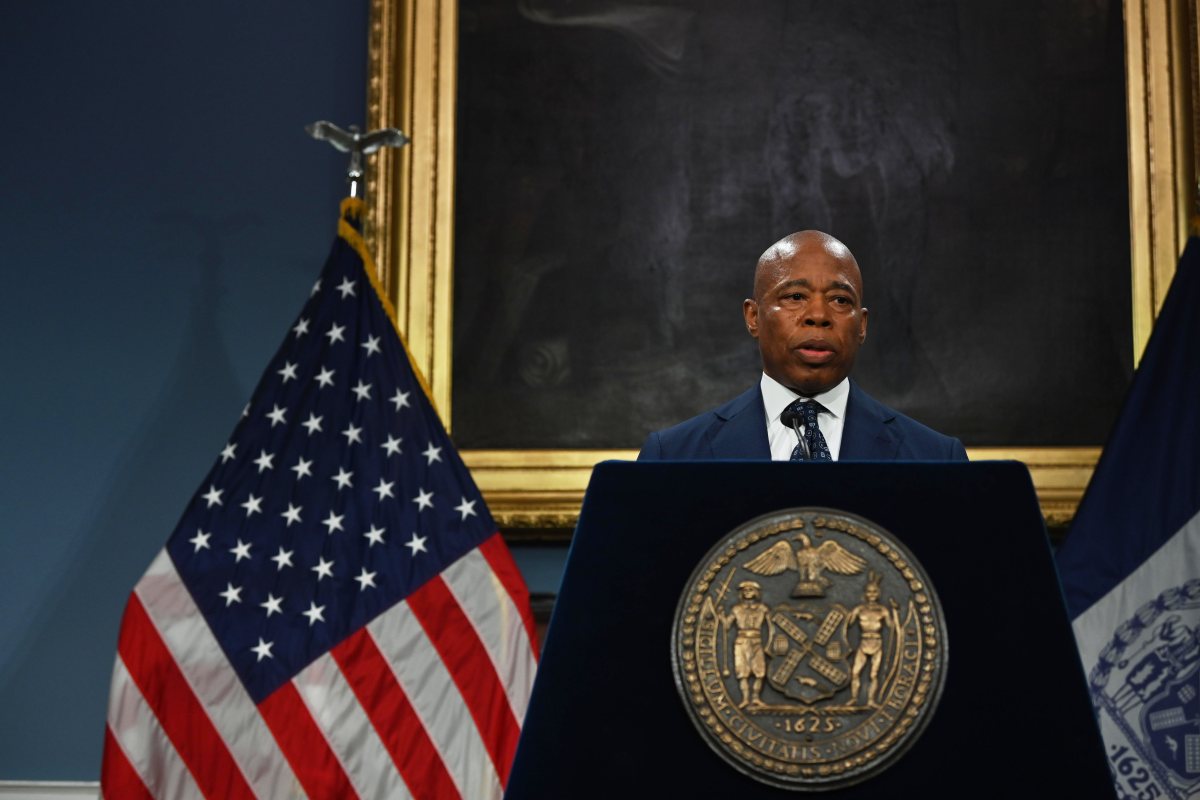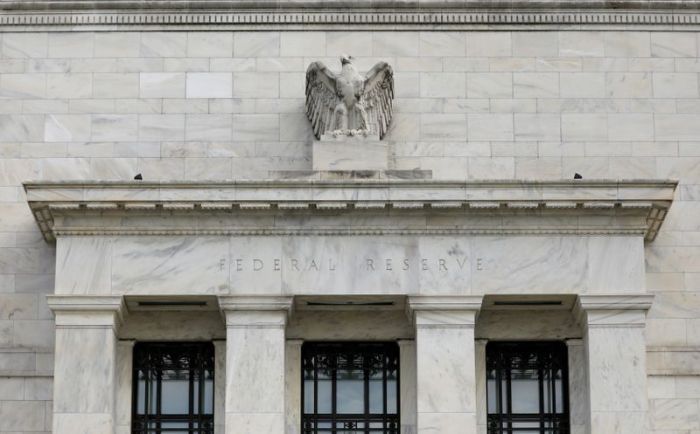WASHINGTON (Reuters) – The number of Americans filing first-time claims for jobless benefits unexpectedly rose last week as a relentless wave of new COVID-19 infections hobbled business operations, offering more evidence that the economy’s recovery from the pandemic recession was faltering.
That was underscored by other data on Thursday showing manufacturing activity in the mid-Atlantic region cooled in December, with factories reporting a sharp slowdown in new orders and job growth. But the housing market remains resilient, with homebuilding and permits powering ahead in November, thanks to record-low mortgage rates and pent-up demand.
Federal Reserve Chair Jerome Powell on Wednesday acknowledged the moderation in economic activity following a record growth spurt in the third quarter. Powell cautioned that “the path ahead remains highly uncertain.” The U.S. central bank kept its main interest rate near zero and pledged to continue injecting more money into the economy through asset purchases.
“The coronavirus pandemic has split the economy in two where the winners are interest-rate sensitive sectors like housing and the stock market, while the losers employed in the leisure and hospitality industries are falling further and further behind,” said Chris Rupkey, chief economist at MUFG in New York.
Initial claims for state unemployment benefits increased 23,000 to a seasonally adjusted 885,000 for the week ended Dec. 12. The second straight weekly increase lifted claims to their highest level since September. Economists polled by Reuters had forecast 800,000 applications in the latest week.
GRAPHIC: Jobless claims – https://graphics.reuters.com/USA-STOCKS/dgkvlqbyypb/joblessclaims.png
Jobless claims are way above their 665,000 peak during the 2007-09 Great Recession, though they have dropped from a record 6.867 million in March. The weekly unemployment claims report, the most timely data on the economy’s health, followed in the wake of data on Wednesday showing retail sales declined for a second straight month in November.
Including a government-funded program for the self-employed, gig workers and others who do not qualify for the state unemployment programs, 1.4 million people filed claims. California and Illinois led the increase in applications, with layoffs concentrated in the services industries.
The United States is battling a fresh coronavirus outbreak, with at least 16.7 million infected and more than 304,000 dead, according to a Reuters tally. State and local government have responded with renewed restrictions on businesses, while some consumers are avoiding crowded places like shopping malls, restaurants and bars. California, home to nearly 40 million people, imposed new tough stay-at-home orders last week.
The restrictions and reduced income as millions of unemployed and underemployed lost a government-funded weekly subsidy is undercutting consumer spending, which will lead to more job losses. Though a COVID-19 vaccine is being deployed, health experts say it could take months for herd immunity.
Congress moved closer on Thursday to a $900 billion rescue package. Economists said the new fiscal stimulus could limit, but not fully offset weaker consumer spending and prevent further layoffs. More than $3 trillion in government pandemic relief powered the economy in the third quarter.
U.S. stocks were trading higher. The dollar fell against a basket of currencies. U.S. Treasury prices rose.
HOUSING SHINES
In a separate report on Thursday, the Philadelphia Fed said its business conditions index dropped to a reading of 11.1 this month from 26.3 in November. Measures of new orders and shipments at factories in the region that covers eastern Pennsylvania, southern New Jersey and Delaware also fell.
The survey’s gauge of factory employment declined and as did a measure of the workweek. A report this week from the New York Fed also showed a moderation in manufacturing in December.
GRAPHIC: Philly Fed – https://graphics.reuters.com/USA-STOCKS/qmyvmqblrvr/phillyfed.png
The housing market has so far been unscathed by the pandemic. But spiraling infections are causing raw material shortages. Lumber prices have soared, which could slow the housing market momentum.
Housing starts rose 1.2% to a seasonally adjusted annual rate of 1.547 million units in November, with single-family homebuilding hitting its highest level since April 2007, the Commerce Department said in a third report. Permits for future homebuilding raced 6.2% to a rate of 1.639 million units, the highest since September 2006.
GRAPHIC: Housing starts – https://graphics.reuters.com/USA-STOCKS/yxmvjqbdxpr/hsbp.png
Last week’s claims data covered the period during which the government surveyed establishments for the nonfarm payrolls portion of December’s employment report. Economists expect a decrease in employment this month.
“The rise comes during the payroll survey week, and increases the odds of a negative print for December,” said Sarah House, a senior economist at Wells Fargo Securities in Charlotte, North Carolina.
The economy, which plunged into recession in February, added the fewest jobs in six months in November. Only 12.4 million of the 22.2 million jobs lost in March and April have been recovered.
The claims report showed the number of people receiving benefits after an initial week of aid fell 273,000 to 5.508 million in the week ending Dec. 5, but that was because many have exhausted their eligibility, limited to six months in most states.
At least 4.8 million people filed for extended unemployment benefits in the week ending Nov. 28, up 268,532 from the prior week. These benefits as well as those for gig workers and the self-employed will lapse next Saturday.
About 21 million people were collecting benefits under all programs at the end of November.
(Reporting by Lucia Mutikani; Editing by Andrea Ricci)

























